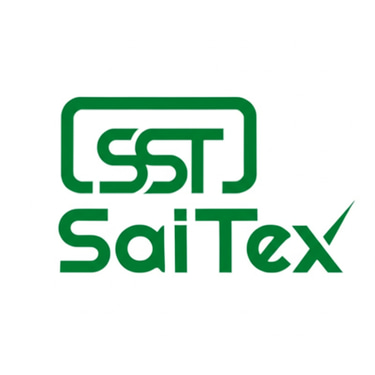The Ubiquitous Nonwoven Fabric: Revolutionizing Industries and Everyday Life
Explore the versatile world of nonwoven fabrics and discover their countless applications across diverse industries. From healthcare and hygiene to automotive and construction, learn how nonwoven materials offer innovative solutions for a wide range of needs. This comprehensive guide highlights the key benefits and general uses of nonwoven fabric, showcasing why they are an indispensable material in modern manufacturing.
7/1/20253 min read
The Ubiquitous Nonwoven Fabric: Revolutionizing Industries and Everyday Life
Nonwoven fabric, a remarkable material crafted directly from fibers without the need for weaving or knitting, has quietly become an indispensable part of our daily lives and a cornerstone for numerous industries. Its unique properties, including absorbency, liquid repellency, resilience, stretch, softness, strength, and sterility, make it incredibly versatile and highly sought after.
At SaiTex, we understand the power and potential of nonwoven solutions. Let's delve into the general uses of nonwoven fabric, highlighting why this innovative material is so critical across various sectors.
What Makes Nonwoven Fabric So Versatile?
Unlike traditional textiles, nonwoven fabrics are engineered for specific functions, allowing for a wide range of customizable characteristics. This adaptability is achieved through various manufacturing processes like spunbonding, meltblowing, and needle-punching, each yielding materials with distinct properties. The ability to control parameters such as fiber type, bonding method, and density allows for the creation of nonwoven fabrics tailored to precise application requirements.
General Applications of Nonwoven Fabric Across Industries:
The widespread adoption of nonwoven fabric is a testament to its efficiency, cost-effectiveness, and performance. Here are some of the most prominent general uses:
1. Hygiene and Personal Care: This is perhaps one of the most visible applications of nonwoven fabric. Its excellent absorbency, softness, and skin-friendly properties make it ideal for:
Diapers and Adult Incontinence Products: Providing superior leakage protection and comfort.
Feminine Hygiene Products: Offering high absorbency and discreet protection.
Wet Wipes: Durable yet soft for cleaning and personal hygiene.
Cosmetic Pads and Face Masks: Gentle on the skin and effective for product application.
2. Healthcare and Medical: The sterile, barrier, and absorbent qualities of nonwoven fabric are crucial in medical environments.
Surgical Gowns and Drapes: Providing a protective barrier against contaminants.
Face Masks: Essential for preventing the spread of airborne particles.
Wound Dressings and Bandages: Offering absorbency and breathability for healing.
Sterilization Wraps: Ensuring instruments remain sterile until use.
Protective Apparel: For medical professionals requiring specialized garments.
3. Filtration: Nonwoven fabrics excel in filtration due to their intricate pore structures, capable of trapping various particles.
Air Filters: In HVAC systems, automotive cabins, and industrial settings.
Liquid Filters: For water purification, industrial fluids, and beverages.
Vacuum Cleaner Bags: Efficiently collecting dust and debris.
4. Automotive: The durability, sound absorption, and lightweight nature of nonwoven fabric make it valuable in vehicle manufacturing.
Headliners and Carpeting: Enhancing interior aesthetics and comfort.
Thermal and Acoustic Insulation: Reducing noise and regulating temperature.
Trunk Liners and Wheel Well Liners: Protecting vehicle components.
5. Construction and Geotextiles: In civil engineering, nonwoven fabrics provide stability, separation, and drainage.
Geotextiles: Used in road construction, drainage systems, and erosion control.
Roofing Underlayment: Providing a protective layer beneath roofing materials.
Insulation: For thermal and acoustic purposes in buildings.
6. Apparel and Footwear: While not woven, nonwoven fabric finds its place in specialized clothing and footwear components.
Interlinings and Linings: Providing structure, shape retention, and comfort in garments.
Footwear Components: Such as insoles and reinforcement layers.
Disposable Clothing: For protective wear in industrial or hazardous environments.
7. Agriculture and Horticulture: Nonwoven fabrics protect crops and enhance agricultural practices.
Crop Covers: Protecting plants from pests, frost, and excessive sunlight.
Weed Control Mats: Suppressing weed growth without chemicals.
Root Bags: For healthy plant growth and easy transplantation.
8. Home Furnishings and Upholstery: From hidden components to visible elements, nonwoven fabric contributes to comfort and durability.
Furniture Backings and Underlays: Providing support and structure.
Mattress Components: Enhancing comfort and breathability.
Disposable Tablecloths and Napkins: Convenient for events and picnics.
9. Industrial and Wiping Applications: Their strength and absorbency make nonwovens ideal for cleaning and industrial processes.
Industrial Wipes: For heavy-duty cleaning and spill management.
Polishing Cloths: Gentle yet effective for various surfaces.
Abrasive Backings: In sandpaper and other abrasive tools.
Why Choose Nonwoven Fabric for Your Needs?
The widespread adoption of nonwoven fabric is driven by several key advantages:
Cost-Effectiveness: Often more economical to produce than traditional textiles.
Customization: Tailorable properties for specific applications.
Performance: Delivering targeted functionalities like absorbency, filtration, and strength.
Sustainability: Many nonwoven fabrics can be made from recycled materials or are recyclable.
At SaiTex, we are committed to providing high-quality nonwoven solutions that meet the diverse needs of modern industries. Our expertise ensures you get the right nonwoven fabric for your specific application, contributing to efficiency and innovation across the board.
